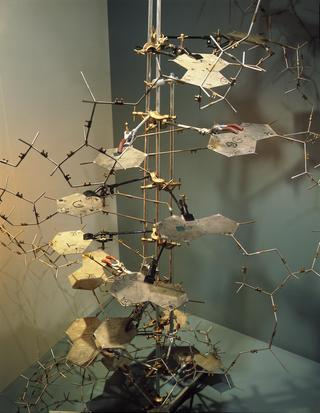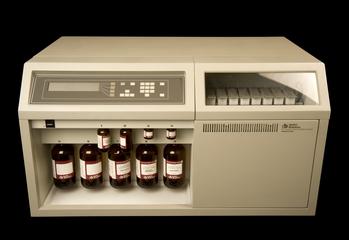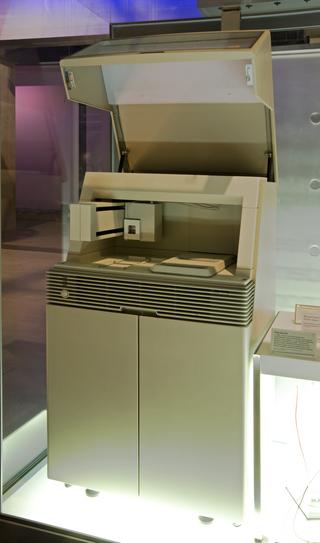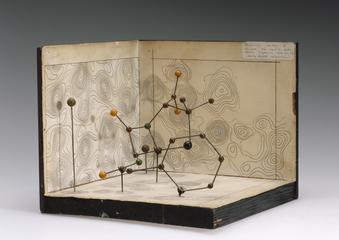
Prototype Automated DNA Gene Sequencer
- Made:
- 1987 in Foster City



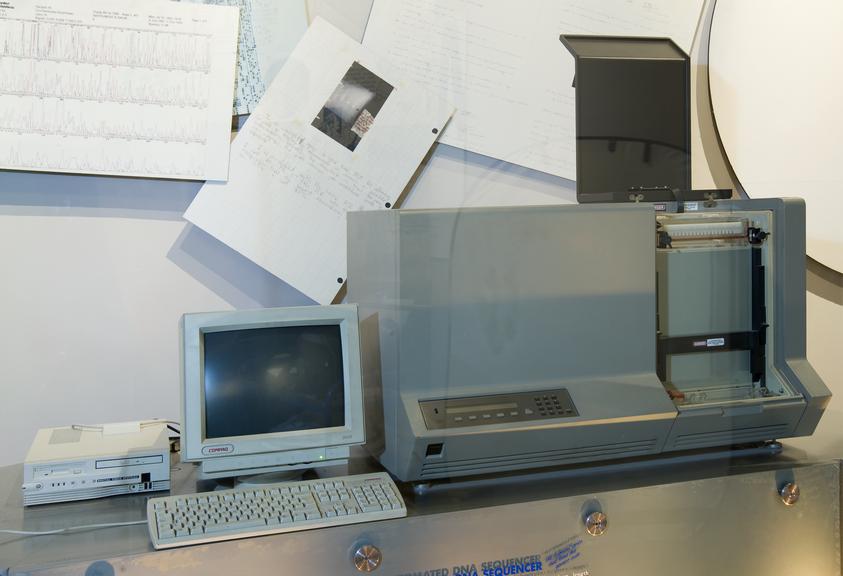
Applied Biosystems 370A Prototype Automated DNA Gene Sequencer, by Applied Biosystems Inc., Foster City, San Mateo county, California, United States, 1987
Determining the sequence of bases in a small length of DNA was achieved in the 1970s. This machine, developed in 1987, automates the time-consuming process. The sequence is read by a laser and appears on screen or on a print out. The machine uses the Sanger method, named after Frederick Sanger (b. 1918), a British biochemist who first determined a process for DNA sequencing. This work won him his second Nobel Prize, in 1980.
Details
- Category:
- Biochemistry
- Object Number:
- 1989-1242
- Materials:
- steel (metal), aluminium alloy, copper (alloy), electrical components, plastic (unidentified) and glass
- Measurements:
-
overall: 580 mm x 970 mm x 670 mm,
- type:
- dna gene sequencer
- credit:
- Applied Biosystems Inc.
